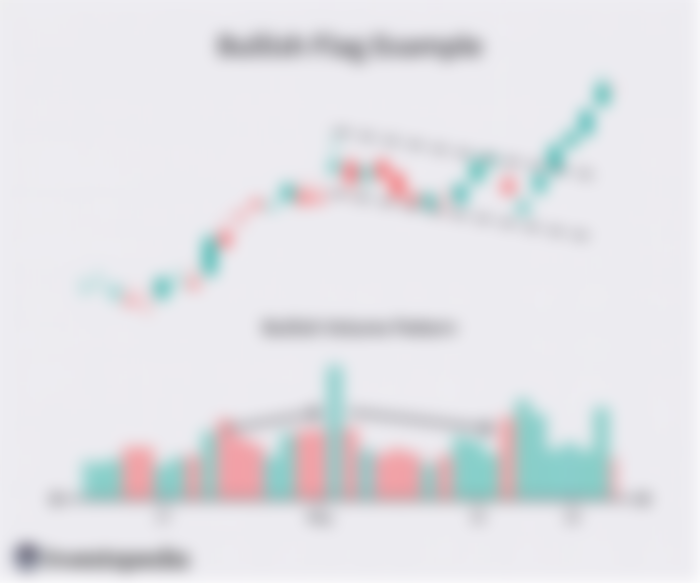This week we explore and breakdown the different continuation patterns.
Rectangles
One of the simplest pattern formations is a rectangle. It is generated when prices are "range-bound," i.e., bound by parallel support and resistance levels. Rectangles indicate market indecision.
When it is created during the share's fall, bearish rectangles occur. It is often an indication that investors and traders are wondering whether the stock has dropped sufficiently. If the price falls below the rectangles' support level, then this indicates that the price, i.e., a bearish signal/indicator, will continue to fall.
During the share rise, bullish rectangles occur. If the price rises above the rectangle's resistance level, then this shows that the price will continue to increase, i.e., a bullish signal/indicator.
Summary
Sideways movement between two parallel lines.
The bullish breakout from the rectangle and could be a valid break on the increase in volume.
After the pattern breakout, the size of the move into the pattern should be repeated.
Motion projection is not always reliable - the more complex, the greater the resulting trend. Normally, in its simplest form, three legs but can extend to seven legs.

Source: The Rectangle Formation
Triangles
A period of overlapping market action with a general narrowing tendency is formed by triangles that can be parameterized by two converging trendlines. Three types of normal triangles are available
symmetrical,
ascending, and
descending.
The fourth type of triangle is quite rare and is referred to as a megaphone or a widening triangle. The defining trend lines diverge to form a megaphone shape, as opposed to a symmetrical triangle.
Before breaking out, triangles typically develop into five distinctive and narrowing legs, giving some form of technical warning of an imminent break. In practice, it remains somewhat hard to distinguish the different phases from each other, and a fair amount of experience is required in this regard.
Notice that the triangle formations assume a bull trend and eventual upward break. The exact opposite applies during bear markets, as with all formations and patterns.
Summary
Three formats, symmetrical, smooth, or flat bottom
A five-wave movement within the development
The breakout point from which the new trend emerges from the pattern
A volume rise at the break of a bull market.
An upper and lower trend line that converges towards each other.
The breakout in a bearish market does not need an increased volume signal. The standard count or goal projection takes the value of the triangle's longest leg and adds it to the breakout point in the bull market or subtracts it from the bear market's breakout point. The expanding triangle goal takes the formation's longest leg and adds it to the breakout stage.
The Elliot wave theory confirms that the triangle could well have five legs and be consolidated before the final trend process.

Source: Triangle
Pennants
After a large bullish or bearish run, pennants are short term continuation trends created. They closely resemble tiny symmetrical triangles and conform to much of the triangle's technical rules, which is why they are paired with triangles.
The primary distinction between a triangle and a pennant is:
The length of the consolidation is typically much smaller and shorter.
Pennants do not conform to the internal formation mechanisms of the five stages.
Common within a strong pattern is a short-term consolidation phase.

Source: Pennant
Flags
As rectangles that grow at an angle, flags can best be represented. As short-term consolidations within a strong trend, similar to pennants, these trends are very common. They often evolve as broad and meaningful formations over longer-term periods. For small and large flags, the construction guidelines and post-market goal estimates are close.
The flag angle indicates a short-term imbalance of supply and demand. Profit-taking cycles can overtake the larger trend for a short time during a strongly trending market, and market consolidation can also grow against the direction of the larger trend.
Summary
An angled rectangle.
Slopes against the main trend direction.
Usually 3 legs in their simplest form, but can become a complex formation of 7 legs.
The scale of the transition to the pattern should be replicated as a minimum objective after the pattern breakout. Big complex flags lead to larger trends.
Preceded by a sharp directional shift on heavy volume.
Volume decreases as the flag is created.
The pattern resumes on a burst of trading activity and volume.


Source: Flag
Thank you for reading and hope you have a good rest of the day!
I also post my content on the following platforms:
Publish0x: https://www.publish0x.com/@aftershock9?a=Vyb82ANmev
Hive: https://hive.blog/@mercurial9
Read.cash: https://read.cash/@merurial9
Uptrennd: https://www.uptrennd.com/user/mercurial9
Steempeak: https://steempeak.com/@mercurial9
Instagram: https://www.instagram.com/minimalistpixel/
Pinterest: https://za.pinterest.com/minimalistpixel/boards/
Twitter: https://twitter.com/minimalistpixel





لأن المستطيلات تنمو بزاوية ، يمكن تمثيل الأعلام بشكل أفضل. كتعزيزات قصيرة المدى ضمن اتجاه قوي ، على غرار الرايات ، فإن هذه الاتجاهات شائعة جدًا. غالبًا ما تتطور بشكل واسع